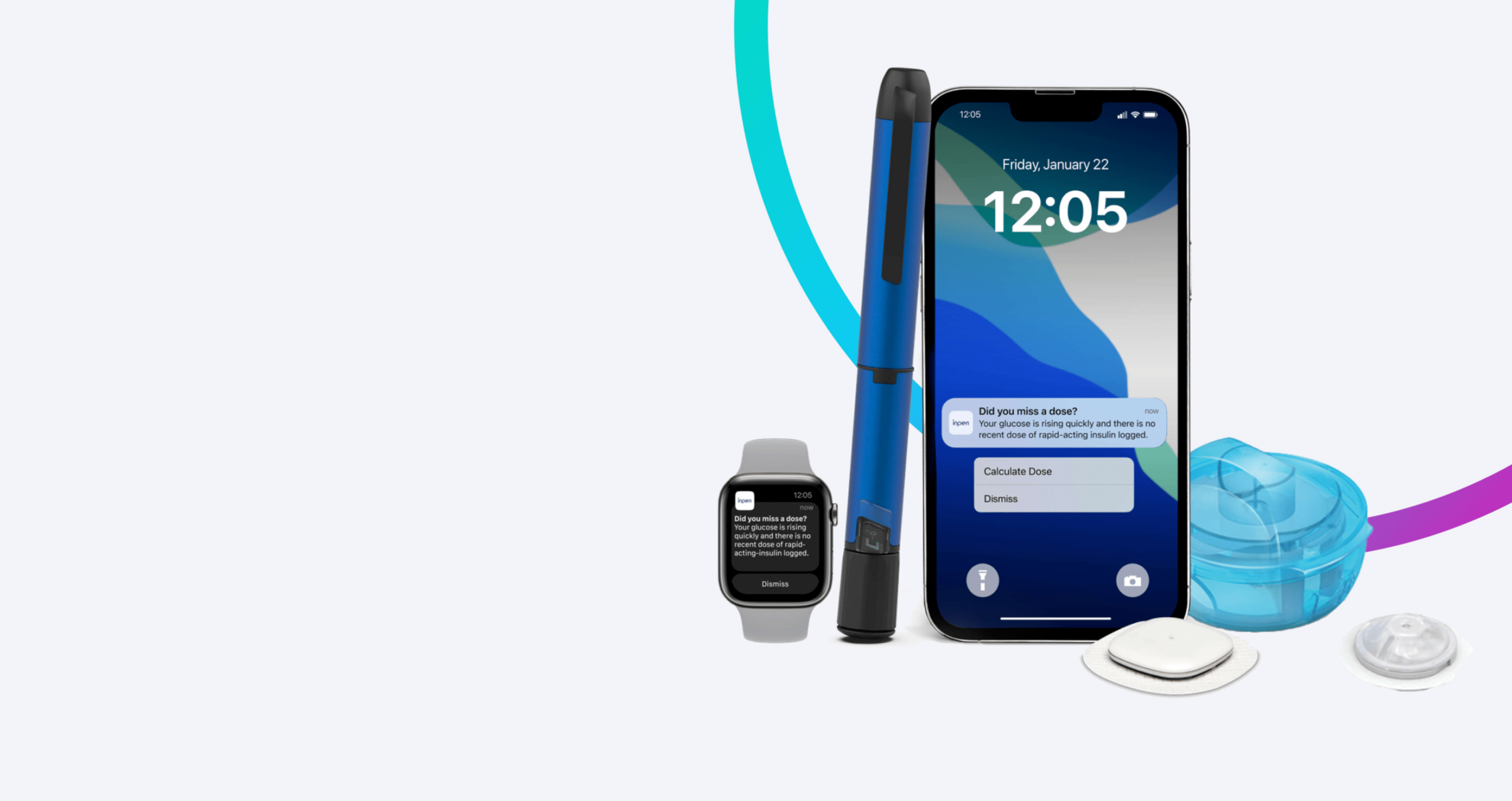
Weniger Nadelstiche.
Weniger Angst2
I-Port Advance™ ist ein kleiner Injektionszugang, mit dem Sie Ihr injizierbares Insulin verabreichen können, ohne sich für jede Injektion in die Haut stechen zu müssen.

Reduzieren Sie die Anzahl der Einstiche von bis zu 15 auf 1 in drei
3 Tage mit nur 1 Einstich? Ja, das ist möglich!
Der i-Port kann bis zu drei Tage
Jetzt verfügbar

Wussten Sie schon?
Eine Studie zu Diabetes bei Kindern hat gezeigt, dass sich bei Kindern, die den i-Port Advance™ Injektionszugang verwenden, die selbstberichtete Lebensqualität signifikant verbessern und auch Eltern berichten von weniger

Jetzt haben wir weniger Angst davor, uns selbst zu spritzen.
Die Anwendung ist schnell und mit der integrierten Setzhilfe praktisch schmerzfrei. Der i-Port Advance™ Injektionszugang muss nur alle drei Tage gewechselt werden.

Das intelligente Smartpen-System mit Simplera™ Sensor Schluss mit dem Rätselraten bei der Insulindosierung.
Kombinieren Sie i-Port Advance™ mit dem intelligenten Smartpen-System
Häufig gestellte Fragen
Jeder, der die emotionalen Herausforderungen von Injektionen wie Angst, Unruhe und Stress oder deren körperliche Auswirkungen wie Blutergüsse, Narben oder Schmerzen erlebt, kann von i-Port Advance™ profitieren. Besonders vorteilhaft ist es für Kinder und ihre Angehörigen, die oft Angst bekommen, wenn eine Injektion ansteht. Es kann auch bei der Verabreichung zusätzlicher Dosen helfen (z. B. Korrekturbolus und Injektionen zur Abdeckung von Snacks zwischen den Mahlzeiten). Auch Kinder oder Jugendliche können von i-Port Advance™ profitieren, da es ihnen hilft, bei der Verabreichung der Insulintherapie unabhängiger zu werden. Wenn Sie an Typ-2-Diabetes leiden und gerade erst mit der Einnahme von Insulin beginnen, ist dies eine großartige Möglichkeit, den Übergang zur Injektion zu erleichtern.
Sie können den i-Port mit Pens oder Spritzen verwenden. Die Nadeln müssen 5–8 mm (3/16–5/16 Zoll) lang sein und eine Stärke von 32–28 haben.
Sie können beides verwenden, aber es gibt eine Regel: Injizieren Sie immer zuerst das schnell wirkende Insulin, warten Sie eine Stunde und injizieren Sie dann das lang wirkende Insulin.
Sie können sich das Schulungsvideo ansehen und die Bedienungsanleitung herunterladen
- Hanas R, Adolfsson P, Elfvin-Akesson K et al. Indwelling catheters used from the onset of diabetes decrease injection pain and pre-injection anxiety. J Pediatr. 2002;140(3)315-320
- Riley D, Raup G. Impact of a subcutaneous injection device on improving patient care. Nurs Manage. 2010;41(6):49-54
- Troncone A, Cascella C, Zanfardino A, Chianese A, Confetto S, Giglio M, et al. Psychological outcomes of injection port therapy in children and adolescents with type 1 diabetes and their primary caregivers. Acta Diabetol. 2017 Oct 1;54(10):975–8
* Im Vergleich zu Injektionen mit Standardnadeln. Der Port kann bis zu 3 Tage getragen werden.
** Bei 5 Injektionen pro Tag.
*** Injizieren Sie nicht mehr als 75 Mal mit einem einzigen Gerät.
- 1.Hanas R, Adolfsson P, Elfvin-Akesson K et al. Indwelling catheters used from the onset of diabetes decrease injection pain and pre-injection anxiety. J Pediatr. 2002;140(3)315-320
- 2.Riley D, Raup G. Impact of a subcutaneous injection device on improving patient care. Nurs Manage. 2010;41(6):49-54
- 1.Hanas R, Adolfsson P, Elfvin-Akesson K et al. Indwelling catheters used from the onset of diabetes decrease injection pain and pre-injection anxiety. J Pediatr. 2002;140(3)315-320
- 2.Riley D, Raup G. Impact of a subcutaneous injection device on improving patient care. Nurs Manage. 2010;41(6):49-54
- 3.Troncone A, Cascella C, Zanfardino A, Chianese A, Confetto S, Giglio M, et al. Psychological outcomes of injection port therapy in children and adolescents with type 1 diabetes and their primary caregivers. Acta Diabetol. 2017 Oct 1;54(10):975–8
- * Im Vergleich zu Injektionen mit Standardnadeln. Der Port kann bis zu 3 Tage getragen werden.
- ** Bei 5 Injektionen pro Tag.
- *** Injizieren Sie nicht mehr als 75 Mal mit einem einzigen Gerät.
- The content and all information provided on this website is for your informational use only and is not intended to be a substitute for professional medical advice, diagnosis or treatment in any manner. The patient stories/quotes provided are experiences specific to a particular patient. Responses to a treatment may vary from patient to patient. Always consult your physician if you have any questions or concerns about your health.
